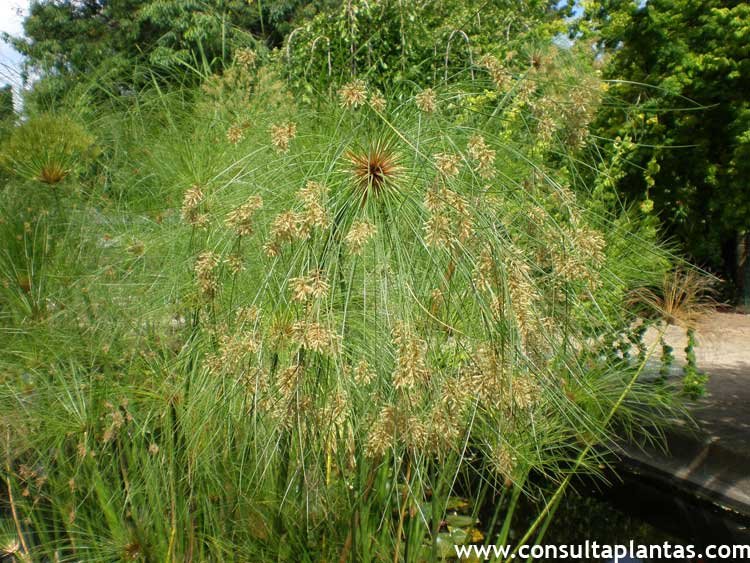



– Umbrella Palm Cyperus alternifolius: While technically not a true hardy plant, umbrella palm will survive milder East Tennessee winters.It looks very similar to Egyptian papyrus in appearance, but grows to 6 feet in height. – Mexican papyrus Cyperus giganteus: This plant is native to Central and South America.This North African native plant reaches heights of up to 8 feet and is best suited to large water features. but today this perennial sedge is a popular landscape plant, particularly for water gardening Although sometimes referred to as Nile grass, papyrus is actually an aquatic reed, or sedge. I love the height but do not care for the leaves, almost. Potting and Repotting Propagating Back to Top Papyrus may be best known as the plant used by ancient Egyptians to create the first true paper for their scrolls. – Egyptian or Giant papyrus Cyperus papyrus: Egyptian papyrus was originally used for making paper in ancient Egypt. Prince Tut Dwarf Egyptian Papyrus, Cyperus papyrus, is a Proven Plant Award Winner in the annual/grass category grown for its foliage.It is appropriate for all sizes of water features. However, unlike the regular dwarf papyrus, the King Tut has regular sized foliage on short, fat stems. – King Tut papyrus Cyperus percamenthus: Also known as the dwarf giant papyrus, this papyrus also grows to 18″ and is native to North America.This is a good choice for smaller ponds and container gardens as well as bog filters. It possesses shorter, slender stems and smaller foliage clusters. – Dwarf papyrus Cyperus haspan: This smaller plant reaches 18″ in maximum height and is native to North America.Most papyrus plants grow up to 10 feet tall, but smaller forms are available. Know that papyrus grass is considered a sedge and prefers moist, warm environments and hence suitable for water gardens and bogs. It produces tall stalks of tufted, umbrella-like foliage that make a great backdrop for other plants, and they can also be cut and added to floral arrangements. Varieties of papyrus available at Aquarium during pond season may include: Papyrus is a wonderful perennial plant for Florida water gardens. Use either Hoffmans Water Garden Soil or Microbelift’s Aquatic Planting Media and fertilize once a month with fertilizer tablets. Pot the papyrus as you would cattails or iris, using larger, solid bottom pots like Laguna’s Plastic Lily Tubs.
DWARF EGYPTIAN PAPYRUS CARE FULL
Plant in any size pot large enough for the root base, and place in full sun in water depths of 0-3 inches for best growth. All varieties of papyrus are excellent choices for koi and goldfish ponds, especially for placement on pond shelves. Dwarf Papyrus is a very short variety of Papyrus, reaching only 18-30 inches in height, with a more compact tufted ball atop the skinny green stalks. The larger varieties tend to have very thick and invasive rhizomes like common cattails, making them harder to harvest from a filter. Dwarf varieties are good choices for bog filters. Papyrus enjoy full sun (four hours or more of direct sunlight) to partial shade. Most varieties have triangular shaped stems, which are filled with a papery-like pith that was traditionally used in making paper. All of the papyrus have lovely long green stems with starburst or firework shaped leaf clusters with tiny brown blossoms on the tips. Papyrus normally tolerate between 6-12″ of water depth, but some of the giant varieties will withstand slightly deeper water. All of the varieties of papyrus are tropical, and must be brought indoors for the winter. While we work hard to provide accurate and up to date information that we think you will find relevant, Forbes Home does not and cannot guarantee that any information provided is complete and makes no representations or warranties in connection thereto, nor to the accuracy or applicability thereof.Papyrus include several species of the genus Cyperus that make lovely addition to ponds. The compensation we receive from advertisers does not influence the recommendations or advice our editorial team provides in our articles or otherwise impact any of the editorial content on Forbes Home. Second, we also include links to advertisers’ offers in some of our articles these “affiliate links” may generate income for our site when you click on them. The papyrus plant is relatively easy to grow from seed, though in Egypt, it is more common to split the rootstock, and grows quite fast once established. This site does not include all companies or products available within the market. The compensation we receive for those placements affects how and where advertisers’ offers appear on the site. First, we provide paid placements to advertisers to present their offers. This compensation comes from two main sources.
DWARF EGYPTIAN PAPYRUS CARE FOR FREE
To help support our reporting work, and to continue our ability to provide this content for free to our readers, we receive compensation from the companies that advertise on the Forbes Home site. The Forbes Home editorial team is independent and objective.


 0 kommentar(er)
0 kommentar(er)
